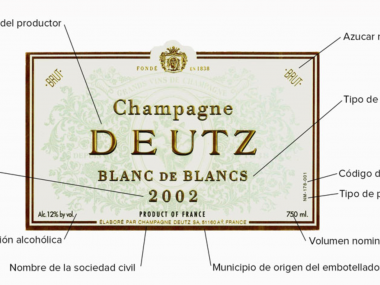Wine grading has been done for many years. However, none of the rating systems have been as reliable or effective as the Parker scores.
Knowing the origin of Parker scores, as well as the way in which they determine the quality of wines, is very important to know whether or not we are making a good decision when choosing or buying a bottle of this exquisite beverage.
Do you want to know a little more about the origin of the Parker Scores? Read on!
What is the history of Parker Scores?
This rating originated after its creator Robert Parker graduated as a lawyer, specifically in 1975. He began his career as a wine taster (which he was very passionate about) and suddenly started writing a series of reports, which he later decided to turn into a magazine.
Each of his reviews were impartial and original, he never kept quiet about any wine. If the product was bad, he would say so, and if it was good, he would say so too. The Wine Advocate was born, one of the most famous and followed wine magazines in the world.
In it, he began to classify each of the wines he tasted, according to a score that he himself invented, on a scale from 50 to 100. The aim was to make it easier and simpler for readers to determine the exact quality or rating of each wine.
Why did he invent them?
As we mentioned earlier, the magazine originally only provided certain reviews of each product, which did not allow less knowledgeable users to determine exactly whether the wine was good or not.
In response to this problem, the magazine decided to create the Parker rating scale, which will easily allow users to know for sure the true quality of the wine, without the need to read the full review in detail.
What are Parker Scores?
Now, these scores are a quality measurement scale that is used only in the classification of wines. They will give the user a concrete guide to the quality of the wine they are buying.
However, they are not a reference to know for sure the definitive taste of the wine to buy. Since, depending on the region, the type of wine, the vintage and the grape from which it was extracted, this reference varies.
However, you can find in the magazine or in the shop, wines that have the same Parker score, but that have a nuance of flavours and aromas that are quite different from each other. Be careful with this!
Why are Parker points used?
As we mentioned in previous lines, Parker points are used in order to understand more easily the quality of a bottle of wine or vintage in general.
Regardless of year, type, structure, vintage or bottling time, every wine is a potential candidate for a Parker score.
What do each of these scores mean?
Now, in previous lines we mentioned that Parker scores are measured on a scale from 50 to 100, forming a combination between these numbers that allows us to know the range in which each wine is.
In the following lines, we will present you the different Parker scores that currently exist.
96 – 100
A wine with this classification refers to an exceptional and extraordinary wine, which has incredible nuances of flavours, aromas and depths that merit extra attention when tasting in order to appreciate each of its nuances to perfection. A good example is the Flor de Pingus wine, which has a score of 96 and is absolutely exquisite.
90 – 95
It can be considered an excellent and well elaborated wine in each of its aspects, which can still be part of the high quality wines. A great example of this is Casa Castillo Pie Franco, which will make you fall in love with it from the first sip.
80 – 89
It can be a wine that is slightly above a medium quality product, which has no noticeable flaws when tasting and can still be considered good
70 – 79
These are simple wines, which do not have much to highlight. Although they cannot be considered a bad product, they do not stand out from the competition.
60 – 69
From here we start to consider wines of very low quality, which have defects in terms of the right degree of acidity, unappetising flavours, with a dirty tendency and a notable absence of aromas.
50 – 59
This being the lowest Parker rating, wines with this rating are considered unacceptable and unfit for consumption.
Now that you know where Parker scores come from and what they mean, we’re sure you’ll get it right the next time you buy a bottle of wine






